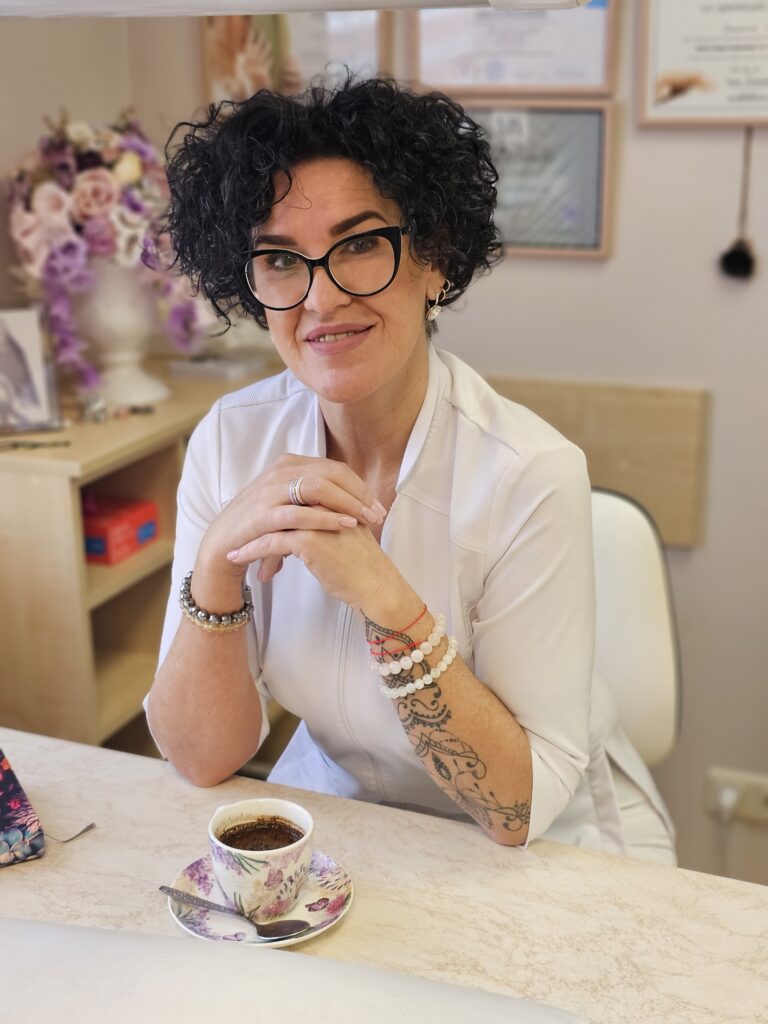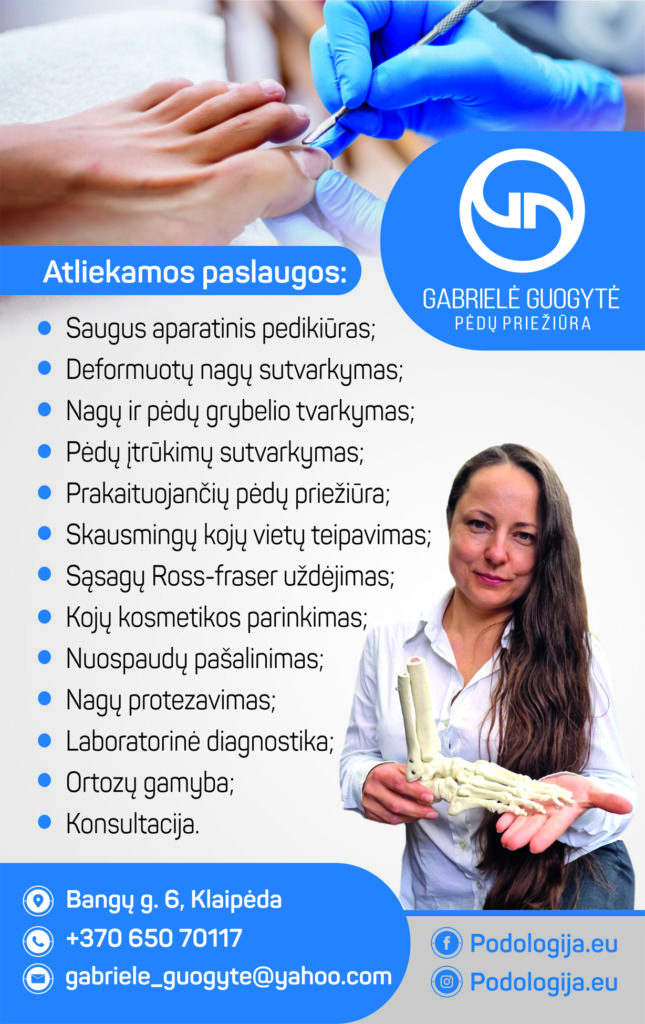On weekends this year, Gabrielė Guogytė and Orinta Ranonienė, foot care specialists (podologists) from Klaipėda rushed to Viliaus Gaigalaitis care home to help residents in trouble. Volunteers performed procedures on 70 patients who had ingrown, thickened, deformed toenails. Both the beneficiaries and the heads of the institution thanked them for this gift.
Volunteers donated weekends
“Gabrielė and Orinta did a great job – these foot care procedures are not for beauty, but for health. Podiatrists provided assistance to elderly, sick residents – they treated thickened and deformed, ingrown nails, – revealed Inga Mikalauskienė, deputy director of V. Gaigalaitis care home for social affairs. – They don’t always even complain about these problems – there is no specialist here to care for problem feet. The nurses, after assessing the condition of the residents, offered the podiatrists a list of people who needed the service the most.”
At first, nursing home residents were skeptical of the services offered by podiatrists, and some refused. By the way, you should not confuse them with the masters of classic pedicure. The competence of a podiatrist is greater – his work is important not only for the aesthetics of feet and nails, but also for overall health. Podiatrists solve many problems, they are able to use innovative methods to restore the shape of an ingrown nail without surgical intervention, prosthetic injured toenails giving an aesthetic appearance.
After podiatrists started working, the opinion of nursing home residents changed: they realized that the procedures improve their well-being, that they are painless.


Foot problems
“We decided to do a good job in the V. Gaigalaitis care home, where there is no foot care specialist like in other similar institutions,” said volunteers G. Guogytė and O. Ranonienė. “Residents are cared for, but fixing thickened and deformed (onychogryphos) nails requires both knowledge and special tools, and only a diabetes nurse can touch a diabetic foot.”
G. Guogytė, general practice nurse, has specialized in foot care for 5 years. She is currently studying the science of diabetic foot care in Kaunas. She studied in Germany and in the country’s private schools. “We are constantly learning and teaching others how to care for and love their feet and nails,” the podiatrists smiled.
G. Guogytė is invited to give lectures at various seminars, O. Ranonienė, who knows German well, translates when lecturers give lectures in German. “I am very happy to be able to repeat my knowledge and gain new ones at the seminars,” said Orinta.
They brought their equipment and tools to the V. Gaigalaitis care home and worked mainly with residents who were bedridden, elderly, and affected by various disabilities. According to podiatrists, foot and nail problems in bedridden people occur due to the slowing down of blood circulation. However, it can also happen due to injuries.
“Initially, there were half a dozen residents on the list who needed a special foot procedure, but new ones kept appearing – they learned from others that it is painless. We established a relationship with the residents – they were waiting for us”, said O. Oranienė.
You can’t hide a problem in shoes
“We worked in extreme conditions: we have special chairs for patients in our offices – there is no need to bend, now we had to carry equipment from bed to bed. But we knew that we would have to work like this, – the podiatrist smiled. – We wanted to show that it is a painless and useful procedure. The time it took for one person varied from 15 minutes to an hour or more. It took longer with those whose nails are all onychogryphous. They could be happy with their beautiful toenails and feel better.” The volunteers, who started providing their services at the end of January, finished before Easter.
According to the interviewees, in Western countries it is common for podiatrists to come to the home to perform these procedures. But this is an additional cost. When they were working in the care home, some wondered why they were volunteering here – they were working for free.
G. Guogytė noticed that people lack knowledge on how to properly care for their feet and nails. “Prevention is very important,” she assured. – I talk about it on social networks, as well as in lectures. I emphasize how to choose shoes – you need to know your feet and what your toes are like. With the right choice, there would be no problems.”
“For some reason, people think that no one can see a foot in a shoe, so they don’t show it to anyone until they get into trouble. Sometimes they try to take care of themselves in their own way, even to cut an ingrown nail”, said O. Ranonienė.
According to G. Guogytė, there is no need to be ashamed of having foot and nail problems, but to register and come to a foot care specialist. “The hidden problem does not disappear anywhere – you need to seek help, take care of your health,” said the podiatrist. – Sometimes those who come to us are afraid to take off their socks so as not to scare us. But we like our work and we don’t have ugly nails.”
It happens that relatives do not see the feet of their person. Only when they are brought to the hospital and the socks are cut off do they see what their mother’s toenails are like. They were not shown to the children so that they would not feel uncomfortable.
According to podiatrists, older people usually need their help. From the Territorial Hospital Funds, the services of a diabetologist nurse are paid only for people with diabetes. So children could make their parents happy by giving vouchers to the podiatrist.
Virginia LAPIENĖ
Photo of personal and “Banga” archive.

#podiatrists #gift #nursing #home #residents #happy
– 2024-04-13 13:02:38


